Thinking about implementing a toy rotation system but you have no idea where to start? This guide was designed to help you eliminate toy clutter and create more meaningful play experiences for your child.
I’ve attempted to answer all of the most commonly asked questions about rotation and how to get started.
What is toy rotation?
The basic idea behind a toy rotation system is that you take only a few toys of different types and put them on a shelf. Other toys will be put away and rotated in at a regular time interval.
Some people rotate toys weekly, some monthly, and some seasonally.

- What is toy rotation?
- What are the benefits of toy rotation?
- Is toy rotation Montessori-aligned?
- What age do you start doing rotation?
- What age does toy rotation stop?
- How to start a toy rotation system
- Storing out-of-rotation toys
- So what about bigger toys like play kitchens and water tables?
- Keeping toy rotation during the holidays
What are the benefits of toy rotation?
How many times have you said to yourself “they never even play with all these toys!”? Well, it’s not an exaggeration, there’s actually very real truth to that statement.
When toys feel cluttered or like “old toys” even small children are less likely to play with them.
The University of Toledo performed a study and discovered toddlers would “focus better and play more creatively” with fewer toys present.
There are also connections between an excessive amount of toys and behavioral issues, and I’ve even seen a claim that fewer toys help alleviate sibling fights.
Too many toys equals too many choices, and it overwhelms the child.
Think about it, have you noticed that your child will take something out as soon as you’ve cleaned up the playroom?
Because the neatness and order has made the toy easier to choose.
How do you feel when your space is chaotic? Don’t you feel calmer and more productive when it’s organized and uncluttered?
We shouldn’t expect children to function any differently.
Are you worried about your child getting “bored” with only a few toys out? Check out Sue’s article about the benefits of allowing your child to get bored. It is actually incredibly important.
Is toy rotation Montessori-aligned?
Absolutely! Structure and order are one of Maria Montessori’s six principles of a prepared environment!

What age do you start doing rotation?
There really is no right age to start toy rotation. The best practice is to start rotating toys as soon as your child begins playing with them, probably around 6 months.
But this doesn’t mean that you need to run out to a store and start picking up a bunch of new toys right away.
You can rotate in a toy or two at a time and watch your child for signs of interest. This will help you avoid buying a lot of toys that your child may never find interesting.
Remember, the Montessori Method really focuses on letting your child lead.
What age does toy rotation stop?
You can continue toy rotation until you notice your child stops needing it. This will happen at different ages for different children.
Around the start of the second plane of development, near the age of 6 years old, children tend to transition away from toys and begin to take interest in hobbies like reading and crafting.
This is generally the age wherein parents stop worrying about rotating their child's toys.
How to start a toy rotation system
There are a few simple steps you can take to get started.
Below, I’ve outlined each one and given specific instructions to make swapping our different toys regularly feel a bit less overwhelming.
Minimize your toy stock
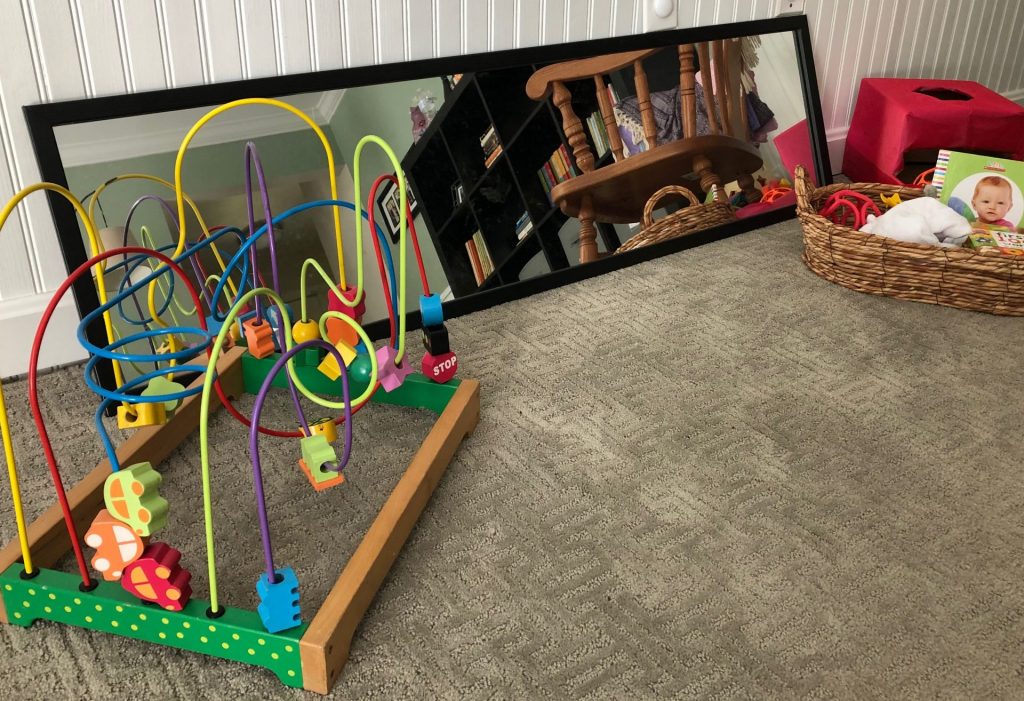
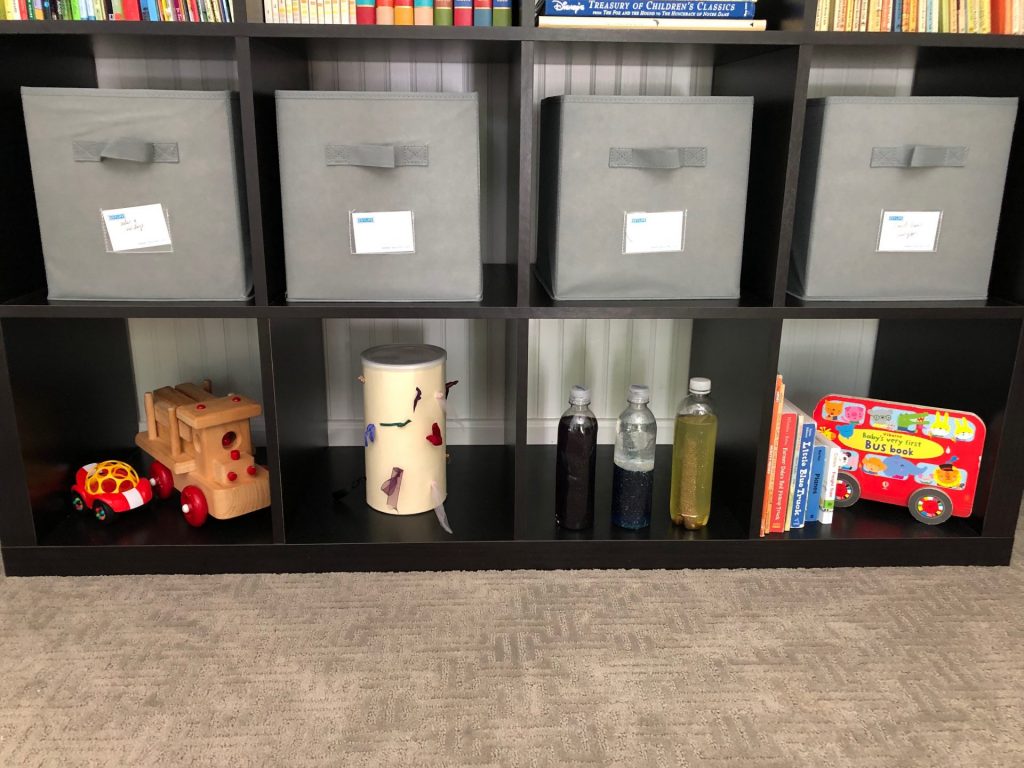
Toy rotation is less about having an excessive amount of toys and more about having the right type of toy for your child's development.
So purge, purge, purge! When the kids are in bed, or at school, collect every toy in the house in one room. Dispose of anything that’s missing pieces, broken or unsafe.
Weed through duplicate toys or toys that may have the same purpose (example: two different shape sorters).
If you’re worried about your child’s reaction to this change, particularly older children who will notice toys are missing, you have a few options.
You can ease into it by taking out a little bit every few days or so.
If you’re trying a full transition to a Montessori home, you can go a step further and sort out electronic toys and toys that don’t isolate a concept.
The toys that you are getting rid of can be sold or donated.
Or you may want to prepare them or have them help you purge their toys. Make it a teachable moment and they can participate in donating them as well.
Decide which toys to rotate
Once you’ve purged and sorted, now you can put out the toys for your first toy rotation. I try to do themes, but you absolutely don’t have to if that doesn’t work for you.
Either way, you ideally want a balance of toys/activities that cover different developmental domains/areas of learning.
Below is our current theme of Colors and Shapes and I’ve listed the examples of how I try to have each area of learning covered.
Disclaimer: my toys are not all 100% Montessori
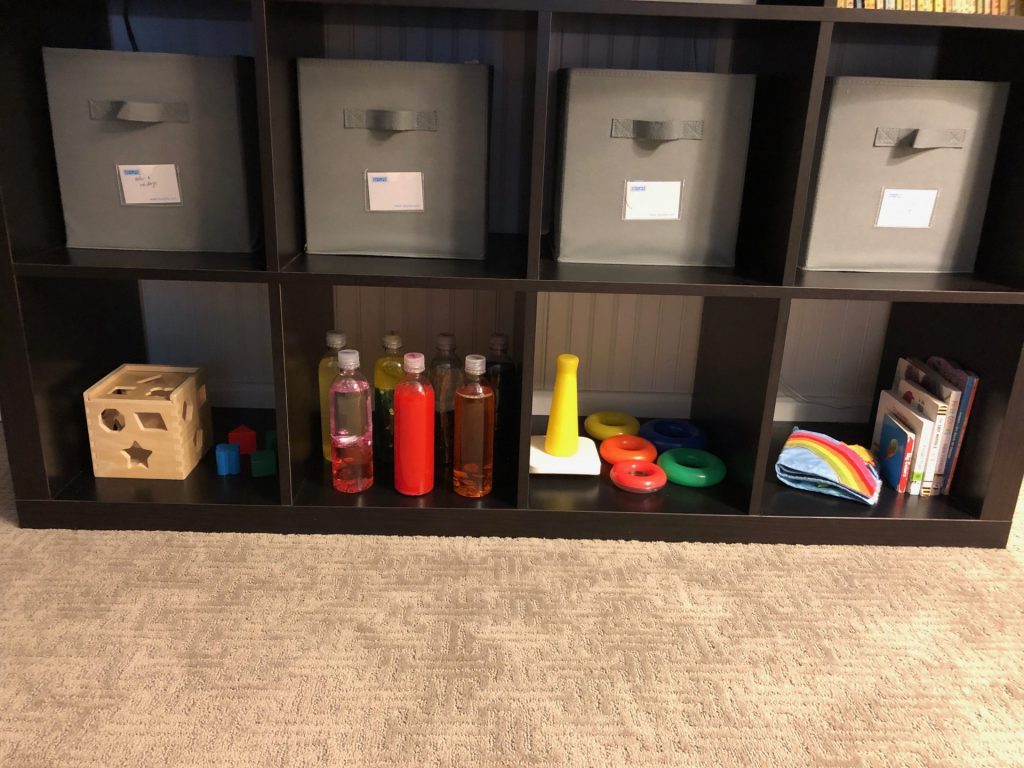
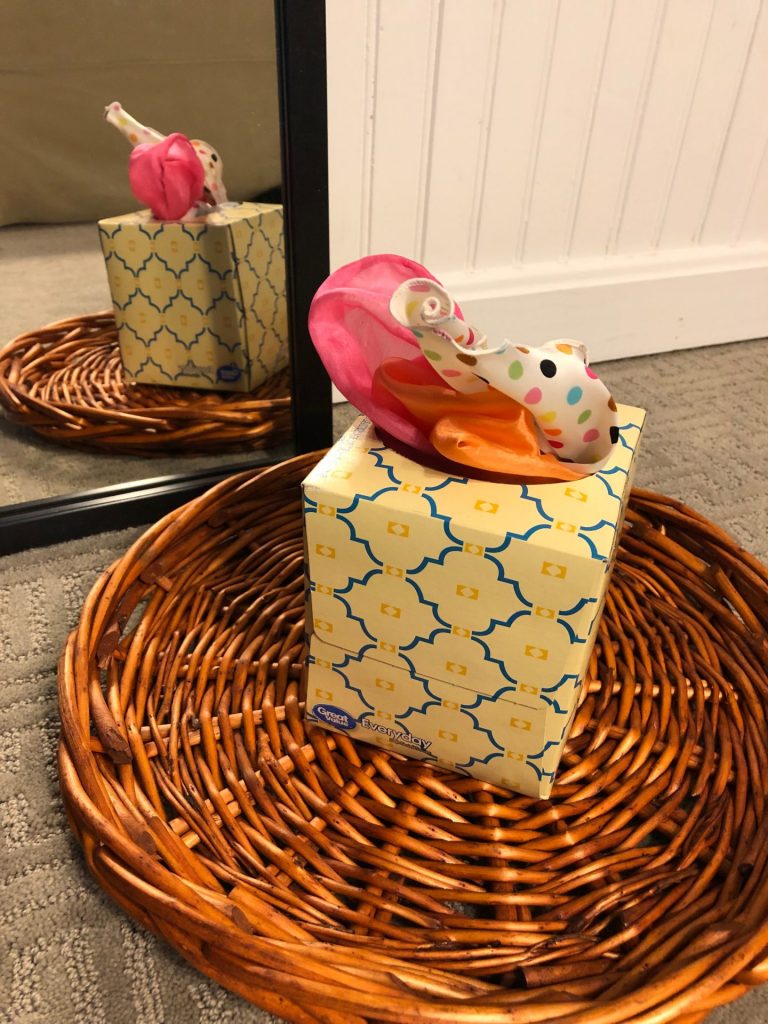
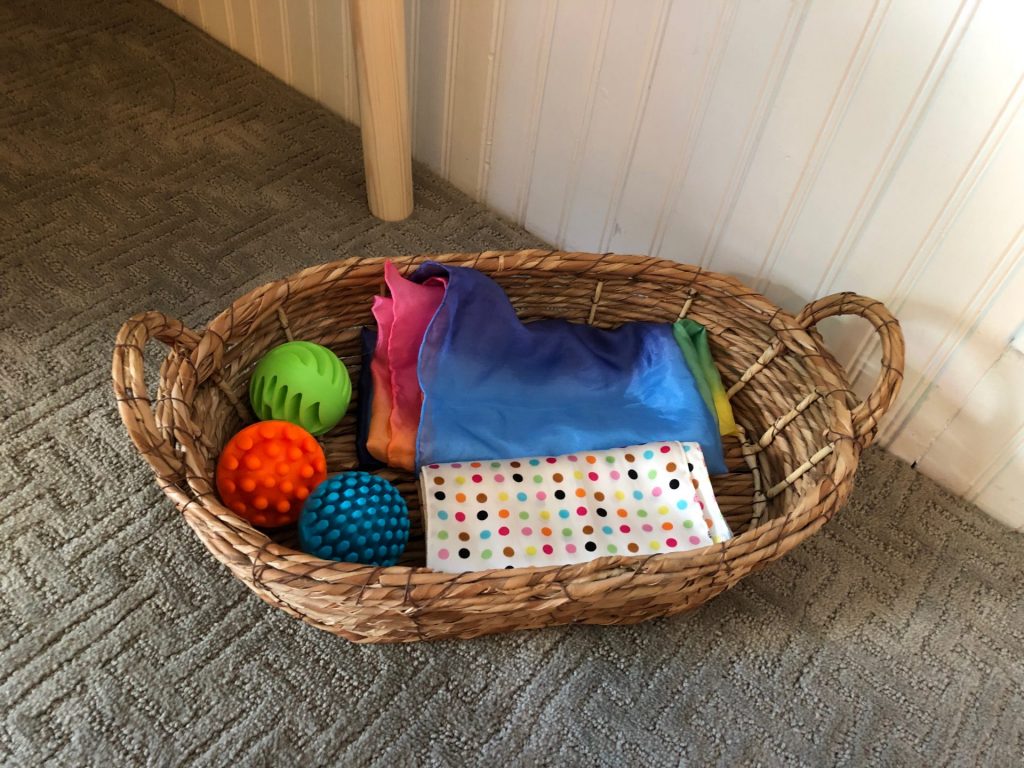
Sort Toys into Categories
- Dramatic/Pretend Play: play silk and scarf, mirror
- Gross Motor: play tent and tunnel with balls, climbing foams
- Fine Motor/Cognitive/Problem Solving/Math: Stacking rings, homemade object permanence box, nesting stacking blocks, and shape sorter (notice I don’t have all the shapes out because I felt it was too many for my 9.5 month old)
- Sensory: Sensory bottles, fabric texture book, teething toys (as she gets older I will put things in our Ikea Flisat table)
- Literacy: For me, books are the exception to toy rotation, but I will “highlight” ones that go with the current theme
- Creative Arts/Crafts: as she gets a little older, I will have an art space for her
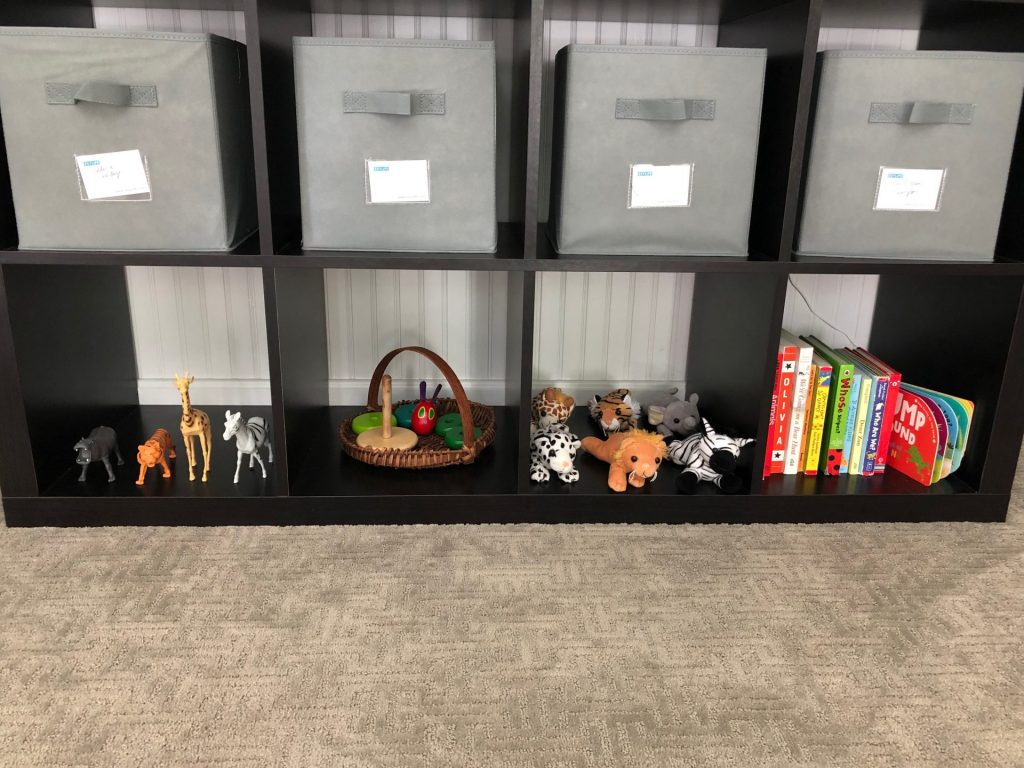
This is just an example, there is no right or wrong. When figuring out what to rotate in and out, just use your best judgment.
There are also certain things I leave out continuously. For example, my daughter loves music, so her musical instruments are always out.
Storing out-of-rotation toys
For toys that are currently out of rotation, you may want to consider grouping them into a storage container labeled with the same categories.
This will allow you to rotate toys quickly before breakfast or at nap time.
Some people suggest grouping toys so that you can simply pull out one bin and put away another.
However, this means that your child may not have an opportunity to mix specific toys in creative ways. It also means that your child's favorite toys will not be rotated in as frequently.
As for where to store toys, this is totally up to you. But I would personally suggest somewhere that is too difficult for your little one to reach but fairly easy for you.
The top shelf in your pantry is a great place because it’s easy to access for a quick switch.
So what about bigger toys like play kitchens and water tables?
If you have the space to leave toys like play kitchens and water tables out year-round, then we absolutely suggest doing that.
Think of a play kitchen or a water table as a piece of furniture or a foundational element in the room.
Rather than rotating these bigger toys, think of them as a place to house toys that you may want to rotate.
For example, a water table can house many different types of sensory options that you could rotate on a weekly basis.
In the same way, a play kitchen could have some “cuttable” fruits and vegetables on some days and then they may have “pancakes” on another day.
If you are truly ascribing to the Montessori philosophy, remember that your child should be working on life skills that include kitchen skills.
So rather than purchasing a lot of play food, you may want to consider allowing your child to use his/her kitchen to “cook” things that they can actually prepare (think cereal and sandwiches).
Obviously, this will require more work on your part because you can leave those ingredients in the play kitchen all day.
Keeping toy rotation during the holidays
Now that you’ve done all this work, you realize the holidays are right around the corner and are worried you’ll be starting from scratch with a bunch more, um… crap.
Two options: you can use Sue’s tips on accepting the gifts you don’t want or before the holidays, give people a wish list using these two gift guides: A Very Merry Montessori Christmas Gift Guide: Ages 0-6.
I hope this Toy Rotation Guide helps declutter your home and I guarantee you’ll see a change in your children and how they play with their toys.
I’d love to see your different toy rotation systems and hear how they work for you!
If you enjoyed this article and want to keep updated on the latest, don't forget to subscribe to our mailing list!

This is wonderful! As a grandma, it helps me to realize that reading the blog is important for grandparents, as well as for parents. Thank you!
Melissa did a great job explaining the importance of you rotation!
My sister hadn’t heard of Montessori until I told her about it a few years ago. It turns out she has been rotating toys for 20 years!
Montessori principals can help everyone!
Pingback: How to Organize a Montessori Playroom — The Montessori-Minded Mom
Pingback: Toy Shelves for Toddlers: 10 Reasons to Ditch the Toybox — The Montessori-Minded Mom